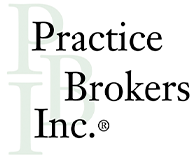When was the last time you purged your accounts receivable? Does it really matter, you might ask? Well quite honestly, yes, it does.
The ideal answer to the first question would be, “Never! I make collecting money a top priority and usually don’t have balances much older than 30-45 days, with the exception of a personal injury case here and there.” My perfectionist side completely agrees with this statement. However, my realistic side brings me back down to earth. Sure, it would be great to have a super-efficient A/R system in place but not everyone does. So if you’re thinking you could use some help in this department, what can you do about it?
While I am not a chiropractor or even business owner, I have seen a fair number of accounts receivable “systems” pass by my desk as a chiropractic business appraiser, and these documents have been as varied as you can imagine; no two clinics are really the same. Each is run by doctors and staff who have their own nuances and ways of “cleaning out the crud.” Furthermore, there is no sole way to approach the tidying up process.
In my opinion, having a solid A/R balance starts with good office management and skilled personnel. If your practice is run haphazardly and your billing person isn’t well-suited for the job, your accounts receivable will show it–and your practice, in turn, will suffer. If there are no systemized follow-up procedures, claims are submitted slowly, or billing codes are entered improperly, you may find that you need to offer additional training or provide more structured support to your billing staff.
This can definitely help shorten the lag time between rendering a service and being paid for it. Quality staff training and support also acts as a preventative measure by keeping those former issues from occurring into the future. Just by getting these two facets under control, you can definitely improve your chances of collecting money owed to you.
Another critical business practice to implement is to periodically scrutinize your accounts receivable balances. Setting up a regular time to do this is crucial. It could be weekly, monthly, quarterly, you name it. Just choose a frequency that is realistic and makes sense to you. Ideally, when you have an adept billing person and streamlined practice management, these factors will cut down on the number of questionable accounts in the first place.
But what if you need to purge your A/R’s? What does that even mean? I often refer to this activity as “purging the system.” It is essentially writing off all “bad” accounts. This is often timeconsuming so, first and foremost, this task should be given ample time. Don’t expect to zip through your accounts in a half hour. You may find that setting aside some time each day or week is a more manageable goal. That way you won’t feel as pressured to accomplish it all in one sitting.
When you are ready, there is no right or wrong way to start the purging process. You might go alphabetically and review each account. Or perhaps you’ll start with the oldest accounts and work your way backwards. The key is finding a way that works for you.
I mentioned “bad” accounts above and this can be easily defined as accounts that you won’t likely collect what’s owed to you. These could be due to a patient who has moved out of town or even passed away, and that’s a good indication that you can purge him/her from your A/R’s. Other factors to consider might be that the person is bankrupt, you’ve sent someone to collections, or you’ve tried numerous times already to collect the money with no luck. There could also be other extenuating circumstances that would warrant the same effect. Don’t get too distressed about it, though. The more familiar you become with this process, the easier it will be. Getting into the habit just might be the toughest part.
The bottom line is that knowing your A/R balance is not enough. Having efficient management and quality staff from the get-go is important. Then be sure to have steps in place to manage those A/R’s on a routine basis as well. It can make your professional life a little less stressful and increase your clinic’s cash flow. By understanding what you can reasonably expect to collect money-wise, it can help you achieve your broader practice goals.








